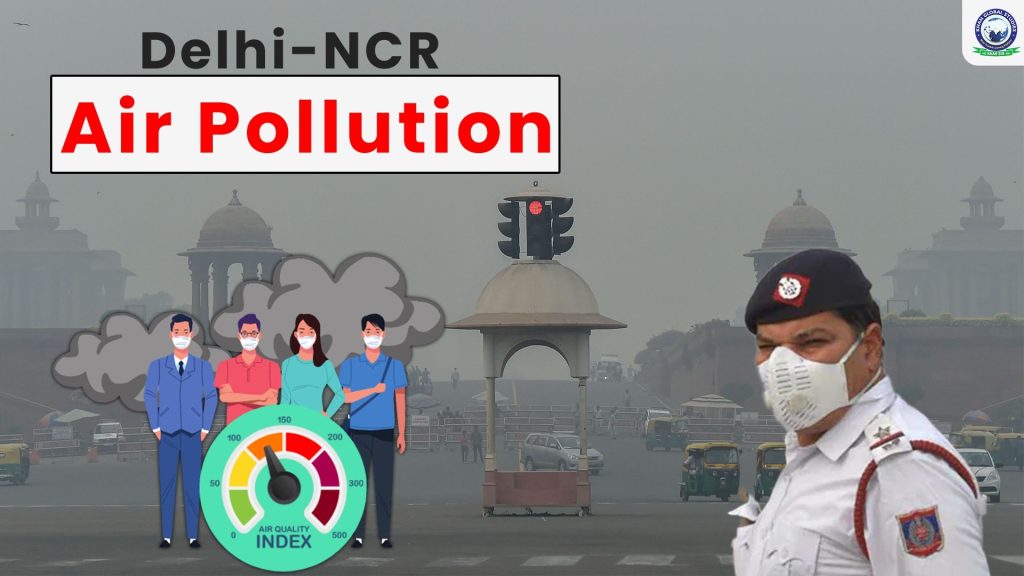
In recent years, the issue of air pollution in the Delhi-NCR region has reached alarming levels, impacting the health and well-being of millions. The Supreme Court has taken a strong stance on the matter, observing that measures like the Odd-Even scheme appear to be mere optics, and urging action against stubble burning. This article delves into the severity of the problem, the Supreme Court’s directives, and the steps that need to be taken to combat this environmental crisis.
Delhi-NCR Air Pollution
The issue of air pollution in the Delhi-NCR region has been a matter of grave concern in recent years. The deteriorating air quality, characterized by high levels of particulate matter, poses a severe health risk to the residents of this densely populated area.
The Escalating Air Pollution Crisis
Delhi-NCR has consistently ranked as one of the most polluted regions in the world. The pollution levels soar during the winter months, mainly due to the practice of stubble burning in the neighbouring states of Punjab, Haryana, Uttar Pradesh, and Rajasthan.
Supreme Court’s Perspective
The Supreme Court of India, recognizing the gravity of the situation, has been actively monitoring and taking measures to address the issue. In a recent development, the apex court made critical observations about the effectiveness of measures like the Odd-Even scheme.
Odd-Even Scheme and its Effectiveness
The Odd-Even scheme, which restricts the use of private vehicles on alternate days, was introduced as an emergency response to curb air pollution. However, the Supreme Court has expressed doubts about the scheme’s impact, calling it a mere optics exercise.
The Menace of Stubble Burning
Stubble burning, a common agricultural practice in the northern states, contributes significantly to air pollution. The burning of crop residue releases harmful pollutants and worsens the air quality in Delhi-NCR.
The SC’s Directives
In light of the severity of the problem, the Supreme Court has directed the governments of Punjab, Delhi, Uttar Pradesh, and Rajasthan to take immediate steps to stop stubble burning. The court emphasized the need for strict enforcement and penalties for violators.
Collaborative Efforts in the Region
Addressing air pollution in the Delhi-NCR region requires a collaborative effort between the affected states. Coordinated action, resource sharing, and the implementation of sustainable alternatives to stubble burning are essential.
The Way Forward
To combat the air pollution crisis effectively, stakeholders must focus on long-term solutions, including promoting clean energy, enhancing public transportation, and raising awareness about the importance of environmental conservation.
Conclusion
The Supreme Court’s observations and directives underscore the urgency of addressing air pollution in Delhi-NCR. All stakeholders must work together to find sustainable solutions and prioritize the health and well-being of the region’s residents.
FAQs
Q1: What is the Odd-Even scheme, and why is it being questioned by the Supreme Court?
A: The Odd-Even scheme is a traffic management initiative where odd and even numbered vehicles are allowed to run on alternate days. The Supreme Court is considering it as just a show and is questioning its effectiveness in preventing air pollution. To deal with the problem of pollution, the court directed Punjab, Delhi, UP and Rajasthan to ban stubble burning.
Q2: How does stubble burning contribute to air pollution in Delhi-NCR?
A: In neighbouring states like Punjab, Haryana and Uttar Pradesh, stubble burning releases harmful pollutants and particulates into the environment. These pollutants come with the air and contribute to poor air quality in Delhi-NCR. This practice significantly increases the concentration of PM 2.5 and PM 10 particles, causing hazardous smog and poor air quality.
Q3: What are the key directives issued by the Supreme Court to combat air pollution?
A: The Supreme Court has issued major directions to tackle air pollution, including criticizing measures like odd-even and directing Punjab, Delhi, UP and Rajasthan to stop stubble burning. The court stressed the need for effective, comprehensive action to address the serious issues of air quality in Delhi-NCR.
Q4: How can collaborative efforts among states help mitigate the pollution crisis?
A: Collaborative efforts among states can reduce the pollution crisis through coordinated policy and regulation enforcement, sharing of best practices, resource allocation, and addressing transboundary pollution sources. By working together, states can create an integrated approach to tackling pollution, reducing its impacts, and more effectively protecting the environment and public health.
Q5: What are the long-term solutions for addressing air pollution in the Delhi-NCR region?
A: Long-term solutions to tackle air pollution in the Delhi-NCR region include the adoption of clean energy sources, promotion of sustainable transportation, strict enforcement of emission standards, afforestation and regional cooperation to control stubble burning. Implementing and following these measures can significantly reduce pollution levels over time.



